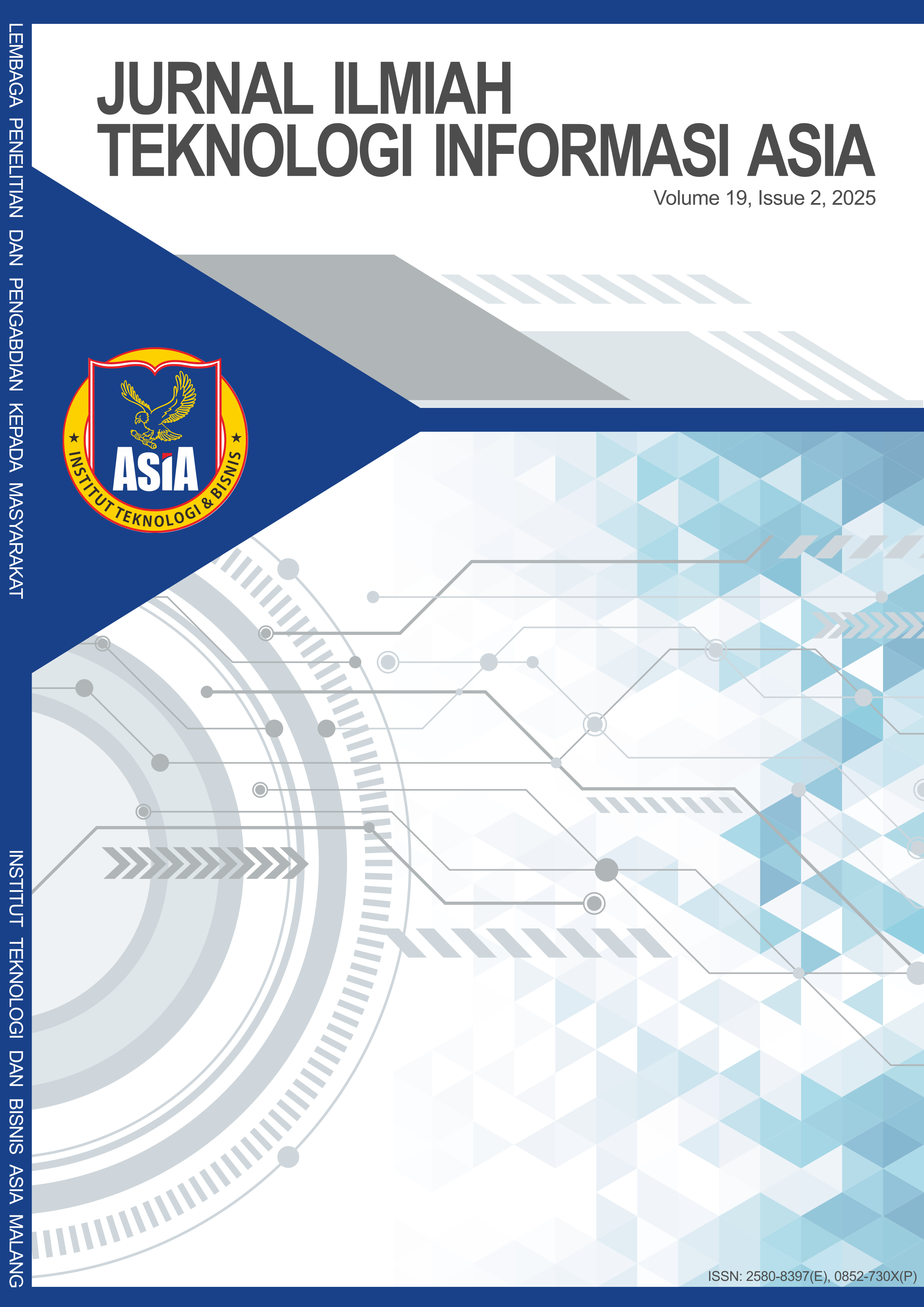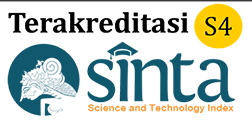Multi-objective optimization analysis of student achievement with NSGA-II algorithm
DOI:
https://doi.org/10.32815/jitika.v19i2.1201Keywords:
absenteeism, educational data mining, multi-objective optimization, nsga-ii, student achievementAbstract
This study investigates the application of the Non-dominated Sorting Genetic Algorithm II (NSGA-II) for optimizing multiple conflicting objectives related to student academic performance. Using the Student Performance dataset from the UCI Machine Learning Repository, which contains demographic, behavioral, and academic information of 395 secondary school students, the research aimed to maximize final grades (G3), minimize absenteeism, and maximize study time. The study began with exploratory data analysis, which revealed wide variability in academic outcomes, low average absenteeism, and moderate study time, justifying the selection of these three objectives. NSGA-II was then implemented with a population of 100 individuals across 200 generations, employing crossover and mutation operators to generate Pareto-optimal solutions. The results demonstrated diverse non-dominated solutions, illustrating trade-offs between academic achievement, attendance, and study time. Absenteeism emerged as the most significant negative factor, while study time and school support were positively associated with better outcomes. Unlike conventional regression or classification methods that produce a single prediction, NSGA-II provided a spectrum of optimal alternatives, offering flexibility in policy and decision-making. These findings highlight the relevance of multi-objective optimization in education and emphasize the importance of integrating behavioral, social, and digital dimensions to design adaptive strategies for improving student performance.
Downloads
References
Adeyanju, T. M., Aziz, A. A., & Safei, S. (2025). A Comparative Analysis of Classification Algorithms on Student Academic Performance. Semarak International Journal of Machine Learning, 5(1), 74–86. https://doi.org/10.37934/sijml.5.1.7486a
Cortez, P., & Silva, A. M. G. (2008). Using Data Mining to Predict Secondary School Student Performance. Proc. 5th Annual Future Business Technology Conference, 5–12. https://archive.ics.uci.edu/ml/datasets/Student+Performance
Deb, K., Pratap, A., Agarwal, S., & Meyarivan, T. (2002). A Fast and Elitist Multiobjective Genetic Algorithm: NSGA-II. Ieee Transactions on Evolutionary Computation, 6(2), 182–197. https://doi.org/10.1109/4235.996017
Feng, X., & Liu, H. (2024). I Feel Blue– Teacher, Can You Help Me? A Study on the Effect of Digital Literacies on Language Learners’ Technostress, on-Line Engagement, Autonomy, and Academic Success. BMC Psychology, 12(1). https://doi.org/10.1186/s40359-024-01637-5
Gu, T., Xu, G., & Luo, J. (2020). Sentiment analysis via deep multichannel neural networks with variational information bottleneck. IEEE Access, 8, 121014–121021. https://doi.org/10.1109/access.2020.3006569
Hasan, M., Azizah, N., Nurjannah, N., Nurdiana, N., & Arisah, N. (2022). Pengembangan Pembelajaran Kecakapan Hidup Berbasis Karakter Kewirausahaan Pada Jenjang Sekolah Dasar. Jurnal Basicedu, 6(3), 4299–4309. https://doi.org/10.31004/basicedu.v6i3.2791
Hasni, N. I., Supriatun, E., & Toruan, S. A. L. (2023). Pelatihan Manajemen Stress Pada Remaja Dalam Menghadapi Permasalahan Akademik Di Sman 1 Sliyeg Kabupaten Indramayu. Jurnal Pengabdian Kepada Masyarakat (Nadimas), 2(1), 49–60. https://doi.org/10.31884/nadimas.v2i1.21
Hayati, N. (2019). Hubungan Keterampilan Berpikir Kritis Dengan Kemampuan Akademik Mahasiswa. Jurnal Biologi Dan Pembelajarannya (Jb&p), 6(2), 7–11. https://doi.org/10.29407/jbp.v6i2.14792
Indriana, D., Widowati, A. I., & Surjawati, S. (2017). Faktor-Faktor Yang Mempengaruhi Prestasi Akademik: Studi Kasus Pada Mahasiswa Program Studi Akuntansi Universitas Semarang. Jurnal Dinamika Sosial Budaya, 18(1), 39–48. https://doi.org/10.26623/jdsb.v18i1.557
João Thiago de G. A. A. Campos, Ferreira, A. M. S., & Freires, F. G. M. (2021). Time Variability Management and Trade-Off Analysis of Quality, Productivity, and Maintenance Efficiency. Brazilian Journal of Operations & Production Management, 18(4), 1–19. https://doi.org/10.14488/bjopm.2021.018
Khoirurroziqin, F. R., & Rafsanjani, M. A. (2020). Pengaruh Sosial Ekonomi Orang Tua Terhadap Indeks Prestasi Mahasiswa Jurusan Pendidikan Ekonomi Universitas Negeri Surabaya. Jurnal Pendidikan Ekonomi (Jupe), 8(3), 80–85. https://doi.org/10.26740/jupe.v8n3.p80-85
Laratmase, A. J., Mahendika, D., & Ratna Ayu Pawestri Kusuma Dewi. (2023). Peran Kecerdasan Emosional, Persepsi Stres Dan Orientasi Tujuan Pada Prestasi Akademik Mahasiswa Di Bogor. Jurnal Psikologi Dan Konseling West Science, 1(02), 64–75. https://doi.org/10.58812/jpkws.v1i02.259
Ma, H., Zhang, Y., Sun, S., Liu, T., & Shan, Y. (2023). A comprehensive survey on NSGA-II for multi-objective optimization and applications. Artificial Intelligence Review, 56(12), 15217–15270. https://doi.org/10.1007/s10462-023-10526-z
Marjuki, M., Hanif, Muh., & Siminto, S. (2024). The Role of Social Support in Enhancing Motivation and Psychological Well-Being of Students: Perspectives From Education in the Digital Era. Indo-Mathedu Intellectuals Journal, 5(2), 1974–1987. https://doi.org/10.54373/imeij.v5i2.1003
McLean, L., Gaul, D., & Penco, R. (2022). Perceived Social Support and Stress: A Study of 1st Year Students in Ireland. International Journal of Mental Health and Addiction, 21(4), 2101–2121. https://doi.org/10.1007/s11469-021-00710-z
Nguyen, N. T., Nguyen, A., & Nahavandi, S. (2020). Multi-objective optimization using NSGA-II and decision tree for predicting student performance. 2020 International Conference on Data Science and Advanced Analytics (DSAA), 410–417. https://doi.org/10.1109/DSAA49011.2020.00060
Prasetiyo, A. Y., Satria, G., & Sukardi, S. (2023). Peran Knowledge Acquisition Terhadap Career Awareness Dan Academic Performance Pada Siswa Vokasi Perkeretaapian. Serat Acitya, 12(2), 178–187. https://doi.org/10.56444/sa.v12i2.1095
Puspitarini, N. A., Kumboyono, K., & Hayati, Y. S. (2023). Factors Influencing Family Support for Education Patterns in School-Age Children. Jurnal Aisyah Jurnal Ilmu Kesehatan, 8(1). https://doi.org/10.30604/jika.v8i1.1554
Rahmadi, I. F., & Hayati, E. (2020). Literasi Digital, Massive Open Online Courses, Dan Kecakapan Belajar Abad 21 Mahasiswa Generasi Milenial. Jurnal Studi Komunikasi Dan Media, 24(1), 91. https://doi.org/10.31445/jskm.2020.2486
Rahmah, S. A., Dermawan, D., & Amalia, A. (2024). Pengaruh Disiplin Belajar Terhadap Prestasi Belajar Kewirausahaan Siswa Kelas Xi Di SMK Pembangunan Nasional. Jpgenus, 2(2), 342–351. https://doi.org/10.61787/34tks238
Setiawati, O. R., Alamsyah, R. T., Sani, N., & Anggraini, M. (2022). Hubungan Stres Akademik Dengan Motivasi Belajar Pada Mahasiswa Fakultas Kedokteran Universitas Malahayati Angkatan 2019. Jurnal Kesehatan Tambusai, 3(2), 26–33. https://doi.org/10.31004/jkt.v3i2.4121
Sharif, M., & Uckelmann, D. (2024). Multi-Modal LA in Personalized Education Using Deep Reinforcement Learning Based Approach. IEEE Access, 12, 54049–54065. https://doi.org/10.1109/ACCESS.2024.3388474
Soni, R. B., Singh, D., & Sharma, K. C. (2024). Optimization of Problems With Multi-Objective Functions and Their Applications in Engineering. Journal of Electronics Computer Networking and Applied Mathematics, 43, 18–33. https://doi.org/10.55529/jecnam.43.18.33
Suprihatin, T., & Setiowati, E. A. (2021). Dukungan Komunitas Belajar Dan Ketekunan Akademik Pada Mahasiswa. Psychopolytan Jurnal Psikologi, 5(1), 20–25. https://doi.org/10.36341/psi.v5i1.1713
Yadav, S. K., & Pal, S. (2012). Data Mining: A Prediction for Performance Improvement using Classification. International Journal of Computer Science and Information Security (IJCSIS), 10(4), 136–140.
Zafra, A., & Ventura, S. (2011). Predicting student grades in learning management systems with multiple instance genetic programming. Educational Data Mining, 3(1), 1–17.
Zhang, L., Ge, H., Ma, Y., Xue, J., Huang, L., & Pecht, M. (2020). Multi-Objective Optimization Design of a Notch Filter Based on Improved NSGA-II for Conducted Emissions. Ieee Access, 8, 83213–83223. https://doi.org/10.1109/access.2020.2991576
Zheng, W., & Doerr, B. (2024). Runtime Analysis for the NSGA-II: Proving, Quantifying, and Explaining the Inefficiency for Many Objectives. Ieee Transactions on Evolutionary Computation, 28(5), 1442–1454. https://doi.org/10.1109/tevc.2023.3320278
Additional Files
Published
How to Cite
Issue
Section
License
Copyright (c) 2025 Jurnal Ilmiah Teknologi Informasi Asia

This work is licensed under a Creative Commons Attribution 4.0 International License.
Upon acceptance for publication, authors transfer copyright of their article to Jurnal Ilmiah Teknologi Informasi Asia. This includes the rights to reproduce, transmit, and translate the material in any form or medium.
While the editorial board endeavors to ensure accuracy, they accept no responsibility for the content of articles or advertisements. Liability rests solely with the respective authors and advertisers.
Website material is licensed under a Creative Commons Attribution 4.0 International License (CC BY 4.0). Under this license, users are free to share and adapt the material for any purpose, including commercial use, provided license terms are met. These freedoms are irrevocable by the licensor under such conditions.














